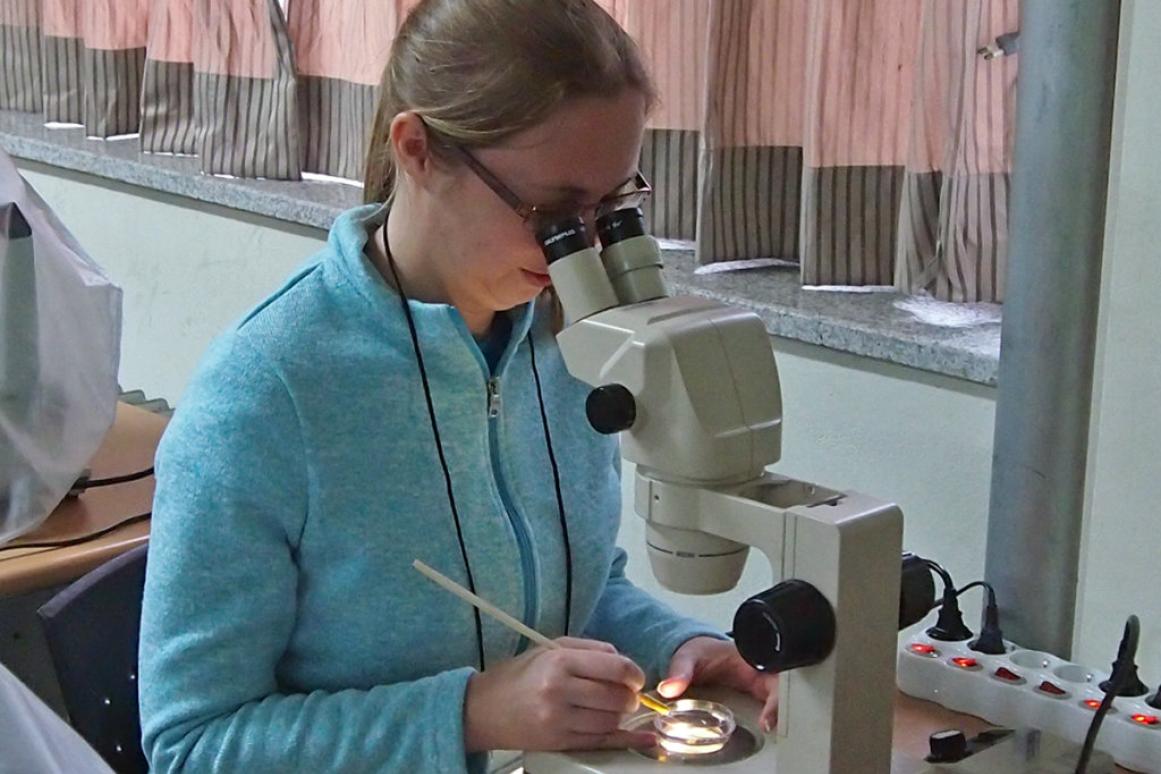Former HRI Doctoral Student and Post-Doctoral Researcher Name New Copepod Species after HRI Mentors

CORPUS CHRISTI - Dr. Melissa Rohal Lupher, a former doctoral student at Harte Research Institute for Gulf of Mexico Studies (HRI) at Texas A&M University Corpus Christi (TAMUCC), and Dr. Wonchoel Lee, a former post-doctoral researcher for Dr. Paul Montagna, recently took part in a study during which they identified and named four new species of copepods. Two were named after their HRI mentors, Dr. Paul Montagna and Dr. Wes Tunnell, while another honored graduate worker, Marissa Pryor.
The study was part of ongoing research that monitors benthic ecosystems (the ecological region at the lowest level of the ocean, including sediments and sub-surface layers) in the Southwestern Gulf of Mexico. Studying these ecosystems, and organisms like copepods, can help researchers better understand an area’s overall health. The study focused heavily on the recovery rate of offshore ecosystems following the Gulf’s two major oil spills, the IXTOC oil spill in 1979 and the Deepwater Horizon spill in 2010.
During the study, researchers collected samples of Harpacticoid copepods and among them were three new species of Zosime, and a new species of Peresime.
Copepods are a group of small crustaceans that are found in almost all freshwater and saltwater habitats and are some of the most abundant animals on the planet. While copepods are tiny creatures, they are vital to their watery ecosystems, eating the phytoplankton and converting the sun’s energy into food for organisms higher in the food web.
Once collected, the samples are examined closely by researchers who look for the smallest details that can help in determining the species.
“First, all the microscopic animals need to be removed by hand and then separated into the major taxonomic groups,” Dr. Lupher said. “After that, a taxonomic expert goes through the animals using an ID key and sees if an animal matches a known species. It is a labor-intensive process in which different species can vary by the number of hairs on the legs and the hair position.”
Thousands of individual meiofauna must be removed from the sediment by hand, which can make the process very tedious.
Dr. Lupher’s role in the study, aside from initial planning, involved doing just that after Pryor, who worked with Dr. Lupher while earning her Master’s in English at TAMUCC, would sieve all the samples to separate the meiofauna from the sediment.
“Then, once a potential new species is found, the new species must pass through a peer review process,” she said.
The four new species include the Zosime montagnai, Zosime tunnelli, Zosime thistlei, and Peresime pryorae. Zosime thislei is named after Dr. Lupher’s Master’s Thesis Advisor, Dr. David Thistle at Florida State University, who introduced her to world of copepods.
“It is a great honor to be able to name a species after my mentors,” Dr. Lupher said. “It means their contributions will be immortalized in scientific literature.”
Dr. Lee shares this excitement and notes the importance of working abroad, and the opportunities that Dr. Montagna’s lab afforded him and his career trajectory.
“I am so happy about this process,” said Dr. Lee, who is now a professor at Hanyang University in Seoul. “I am indebted to Dr. Montagna from my time in Texas and when I was in his laboratory. He was genuinely helpful to me and very supportive of all my activities at his lab.”
Dr. Lee says that careers abroad, and especially those in the U.S., are valuable, and sometimes critical for job hunting in Korea.
“I experienced several experimental procedures including meiofauna analysis techniques in Dr. Montagna’s laboratory, and those are my key skills in several of my current projects,” he said.
Dr. Lee continues to have collaboration with Dr. Montagna’s lab, as well as his students. Two of them, one being Dr. Lupher, have visited Dr. Lee’s lab thanks to joint grants by the Korean Research Foundation and the National Science Foundation. In addition, Dr. Lee’s former student, Hyunwoo Bang, has been a visiting student at HRI and has since gone on to become a professor at Mokwon University in Korea.
Pryor is now studying to become an EMT but says that her experiences working with Dr. Lupher and HRI are times that she will never forget.
“When Dr. Lupher told me she was going to name a species after me, I was totally psyched!” Pryor said. “I loved every minute I spent in the Benthic lab - it was my favorite job to date. I know to most ordinary people having a meiofauna species named after you means nothing, but to me, it is something that I will treasure forever.”
Pryor added that having a copepod named after her made the long hours and thousands of sorted meiofauna worth the hard work.
Dr. Lupher now works for the Texas Water Development Board as a Hydrologist and Coastal Modeler where she maintains and runs the TxBLEND model that provides water velocity, surface elevation, and salinity information for Texas bays and estuaries.
